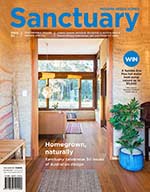Design Workshop: New house from the old
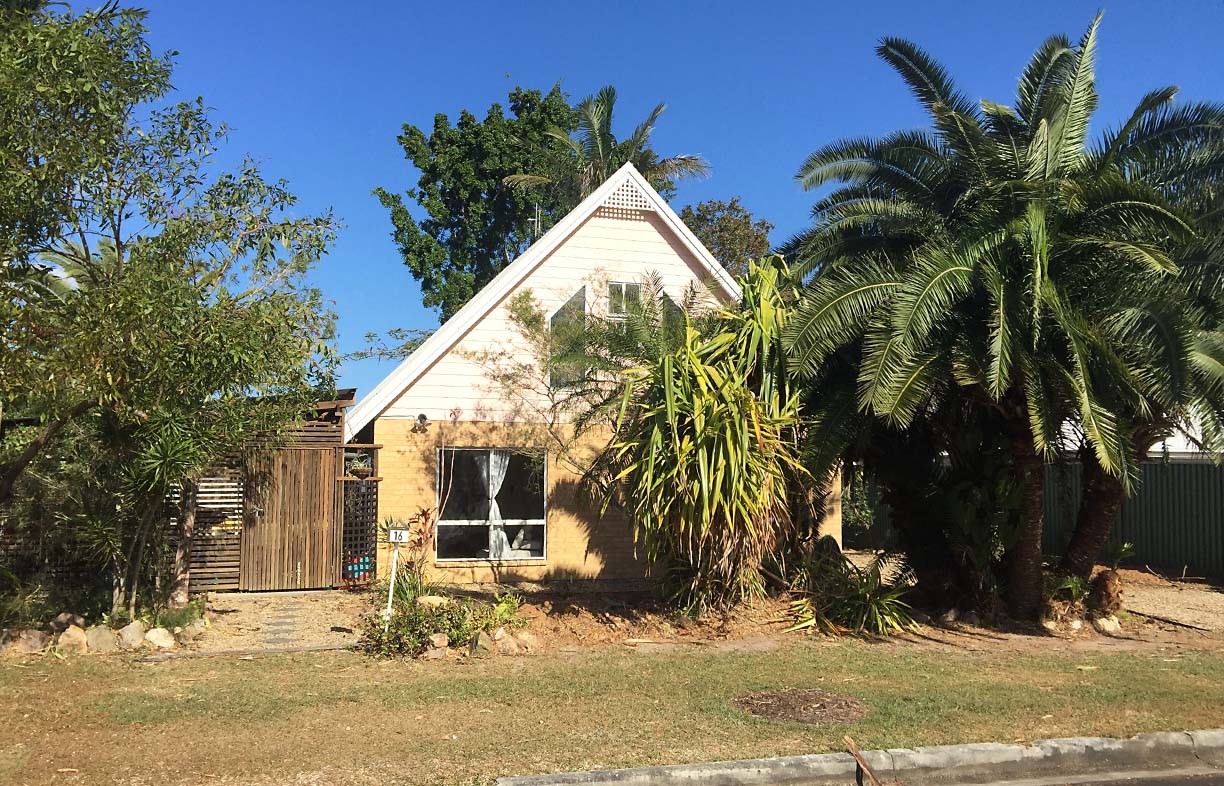
On Queensland’s Sunshine Coast, Lisa Hartmann and Kurt Weinert are planning to deconstruct their ageing, inefficient house and use the materials to build a sustainable new family home. Experienced in the use of recycled materials, Peter McArdle of ptma Architecture gives the couple some pointers.
Two years ago, Kurt and Lisa decided on a sea change and moved with their small son Kai and dog Piper from Brisbane north to Coolum Beach, into the house Lisa grew up in – and they love the location.
“We are a very active outdoor-loving family,” says Lisa. “We spend a lot of time mucking around in our backyard, at the beach or exploring the beautiful bushland surrounding our residential estate.”
They are currently designing a new home for their block: one that is light, airy and well connected to the natural environment around them, with space for visiting family and friends.
“We want to reuse materials from the original building because it’s the family home I grew up in and I have happy memories and sentimental connections to everything about it,” Lisa explains, “and also to reduce the environmental impact of our build.”
Lisa and Kurt’s design includes a covered terrace, a sunken lounge with fireplace, and bedrooms in a second storey that overhangs the kitchen/dining area to the north-east. They asked Peter about how best to reuse the bricks and other materials from the existing house, how to make the most of passive solar design to ensure an energy-efficient home that stays warm in winter, and what he’d recommend for active heating and cooling systems.
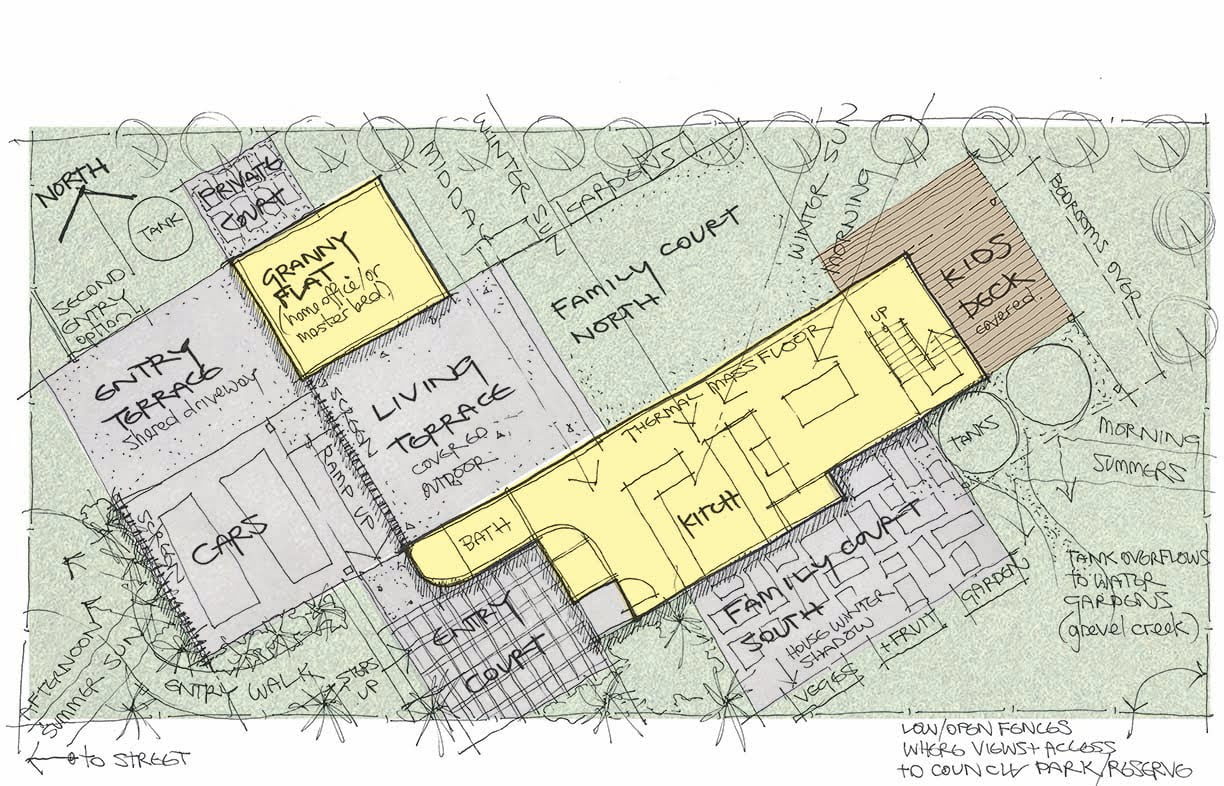
Peter’s response
We love the idea of deconstructing your childhood home and giving it new life. Before we get into the detail of your design, here are a few overall suggestions.
Understand your site: Your entire site can benefit you and your family, so try to avoid narrow strips of land beside the house that you can’t use well. Remember when designing that you live in a neighbourhood, and think about the relationship of your site to its surroundings.
You mentioned enjoying the common council reserves around your home. If you pulled down your tall Colorbond fences in some areas, it would open your site to the reserve behind. High fences can give the perception of security but they can also limit the ability of a neighbourhood to keep an eye out for each other. Lower or open fence designs might still keep a loved pet in, but allow breezes and wildlife through. This might help you landscape your own site differently, too. Just remember that side fences are a joint responsibility – talk to your neighbours before making changes.
Plan for the future, build for now: What are your future plans for children, pets, work and life? If any of the below is of interest for the future, plan it now – you can always build it later when you need it.
Ageing in place – If you intend leaving this home only when your children evict you, what might happen between now and then? It’s generally a good idea to design at least one bedroom and bathroom on the same level as the key living spaces, in case of injury or simply age, which will get us all in the end!
Working from home – Do you need a home office? Might you one day enjoy not having to commute to work?
Granny flat – With grandparents eager to share their grandchild, design so that you can enjoy their company, but also escape to your own spaces during extended visits. And would you like to be able to offer for them to move in with you as they age?
Passive income – You enjoy family life at the beach. Would a passive income allow you to step back from work? What if you could rent out a small part of your home to a friend? Many councils allow dual occupancy on lots of your size; you could check if this applies to you. Using existing residential land better also allows more of our bushland to stay bushland.
Design
Good on you for chasing an outdoor lifestyle! The house you’ve designed opens nicely to the north-east. The pavilion style works well downstairs. However, the bedroom level would shade winter midday sun from your main living spaces.
The house is currently drawn square to the side boundaries. Remember, your property boundaries are lines on a piece of paper in a larger environment – they are not real to your life in the way the hot summer afternoon sun is when you are cooking in the kitchen, or the warming winter sun is on a couch or thermal mass floor. Try spinning the house on the site so your living pavilion faces north, as per our suggested design. This way the living area gets full winter sun, opportunities are created for landscaped courtyards, and the strips of waste land to the sides of most suburban houses are minimised.
The main alterations in our sketch design are:
- A flexible ‘granny flat’ is added and the covered terrace becomes both shared outdoor space and a link to the house
- A carport is used to help define the entry zone, with a ramp to allow universal access through the home
- The upper level is shifted to the south so that it doesn’t block the winter sun from the living area below
- The form of the house is used to create rich courtyard spaces that you can use differently with the passage of the seasons and as your family needs change, rather than having only the one backyard space
The bedroom zone upstairs is not defined yet on your plan, but looks big enough for several bedrooms and a bathroom. Think about whether you would like more smaller bedrooms or fewer larger ones. Could they open onto a common play space which could be a study later on? And consider a little deck up there to allow the bedrooms to have doors opening onto park views and for better breezes. Your roof design and colour can help control glare to these bedrooms.
Rainwater tanks placed in your courtyards also help shape the roof design and landscape design. Can the tank overflows feed a gravel creek, which in turn feeds gardens surrounding your existing mature trees to encourage bees and wildlife? Plan vegetable gardens into your design now, taking into account the shade your house will cast.
If you can control the height of fences, the site has no ‘back’ to it any more – every direction becomes a space to play in, look at, walk around, or frame a view. If your dog does need a fence you have the option of installing a higher fence to one courtyard without feeling like your whole life is hemmed in. Screening trees and landscaping can help with privacy from neighbours where needed and can help you shade the western end of the house from the hot afternoon sun.
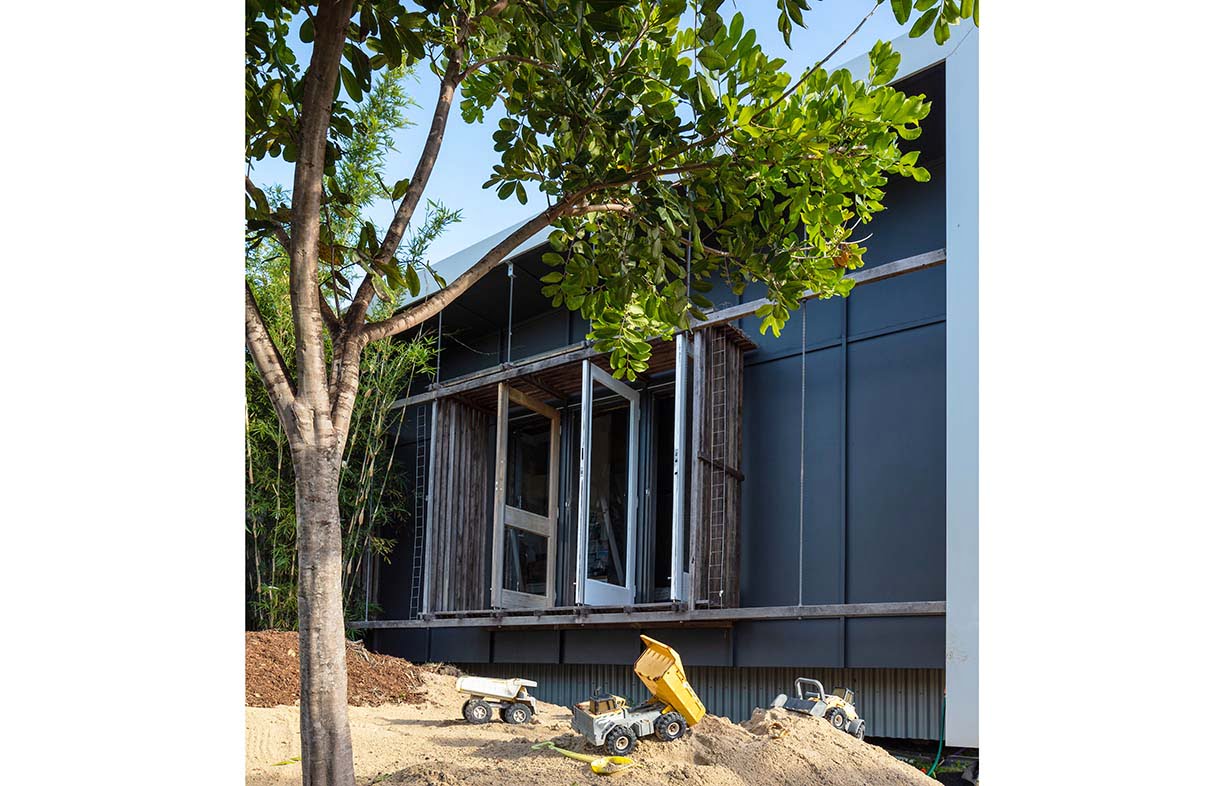
Active heating and cooling
As a rule of thumb: passive before active. Then think about good ceiling fans first, before any other heating or cooling. There are some great fans out there. We look for low energy use and low speeds to keep the air turning over with minimum wobbles. [Ed note: see ‘Fan club’ in Sanctuary 49 for more.]
You asked about hydronic heating: it is a wonderful heating method if you feel the cold. Have the system designed well to suit the final house design. You want to minimise hot and cold spots, and control the heat in zones. Some heat sources for hydronic heating will also cool the floor slab, so consider this with fans as a possible alternative to air conditioning the whole house.
Hydronic heating or cooling will not remove humidity though, so you may think about air conditioning a single room as a heatwave refuge. You can always add air conditioning to more rooms later; just allow for it in the switchboard and wiring.
Suggestions for reusing materials
The reuse of material can often be labour intensive, but saves material costs. If you are going to put more labour in, we’d suggest do it in a way you’ll love later. Don’t feel pressure to use every brick and nail. Be selective. Through age and the process of deconstructing, materials may not suit reuse in the way they were originally used, and they may not last as long as new materials. But there can be a beauty in ageing. Put aged materials where you can see and touch and appreciate them as they have a story to tell. They are then also more easily checked and maintained.
Roof sheeting: Your roof sheeting may be better suited now to act as rain screen cladding on a sheltered wall. This can reduce purchase of new cladding while helping improve the thermal performance of a wall (by blocking western sun, for example). If you batten this cladding off the main structure and leave an air gap behind, heat can escape and water drain. Sarking with ply backing under the battens can help to make sure the house remains vermin-proof and watertight.
Brickwork: Reusing the brickwork may be a slow process as you’ll need to dismantle and clean up each brick without destroying it. Rather than using reclaimed bricks in the house structure it might be best to reuse them in a way that does not hold up your build process and doesn’t depend on a perfectly clean brick. Some ideas:
- as a thermal mass surround to your fireplace
- as a feature floor over a structural base
- as a non-structural internal brick lining, part of reverse brick veneer walls
- on edge as the floor to your ground level terrace
- as garden bed edges or garden paving
Windows and doors: Your existing aluminium windows and doors may come out in reasonable condition. If they do, I recommend using them in well-sheltered locations in case they don’t weather as well as new windows. Use them where you intend to have curtains so you can help them perform better in winter.
Hinged doors might be reused in a new configuration. They don’t all have to match perfectly in the new home. Group the recycled ones together in a zone to make sense of the reuse, e.g. recycled doors in bedrooms, new in living areas.
House frame: Depending on the age of the original house the existing stud frame might be reasonable timber. I suggest you don’t try to use it in a new stud frame as the de-nailing will hold up your build. Use it later in the build process, to create privacy screens or cladding for feature walls.
Cabinetry: Your cabinetry may be able to be reused if care is taken at the demolition stage, and if you can be flexible around your kitchen design. Cabinet carcases are usually made in transportable sections and can be removed and put back together in new configurations. A new or reclaimed benchtop over this can help a kitchen feel new. Alternatively, if the doors are good but the carcases water damaged you could take the doors off and reuse them in a new kitchen.
Fixtures: Fixtures such as basins and baths can be reused if they come out undamaged. Talk to your plumber to make sure they still comply with current requirements. Put floor drains in your bathrooms in case the older fixtures don’t have their own overflows. Take care trying to reuse taps and mixers – make sure you can get replacement parts later.
Concrete slab: Can some of the slab stay in place and be reused for the new home, e.g. for the outdoor terrace? Parts of the old concrete slab from the house that you no longer want can be cut up into oversized pavers for the garden landscaping. This is very heavy work but can be rewarding – you can play with sizes and patterns.
In conclusion
Once you know what you can reasonably recycle from your existing house and source from local secondhand yards, you can select necessary new materials knowing most of the hard work has already been done. Best of luck, and I trust this gives you food for thought.
further reading
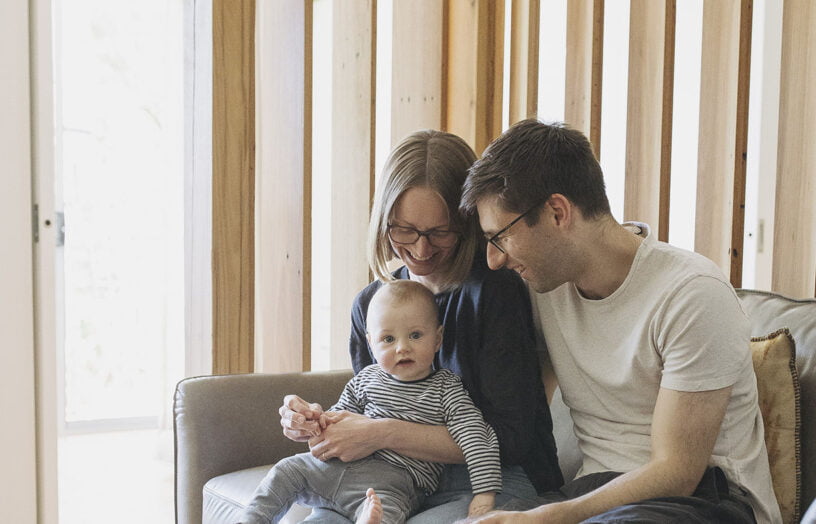 Design workshop
Design workshop
Design workshop revisited: Small space success
With some small but important changes to the internal layout based on our expert’s advice, this expanding young Canberra family is getting more out of their diminutive apartment.
Read more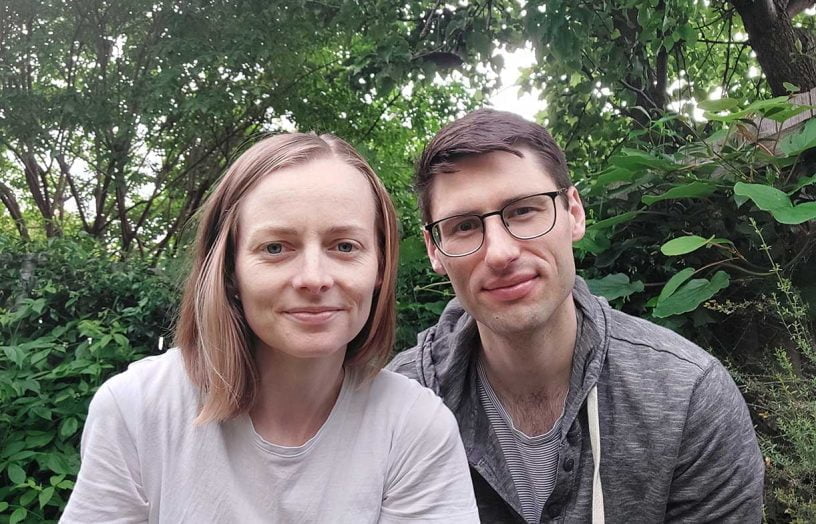 Design workshop
Design workshop
Design workshop: Making a small space work harder
Young professional couple Jess and David love their diminutive Canberra apartment and the productive courtyard garden they have established, and would like to make changes to maximise natural light, make the most of the available space, and accommodate a future family. Small space expert Kate Shepherd of Rob Henry Architects is on hand to help.
Read more Design workshop
Design workshop
Design workshop: A higher-performing volume build
Kirsten and James are keen to make the project home they’re planning in Camberwell, Victoria, as energy-efficient and comfortable as possible, and have budgeted for some upgrades. Architect Penny Guild and ESD consultant Erika Bartak give the couple some advice on achievable tweaks to improve their home’s performance.
Read more

